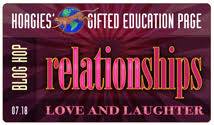One of my “go to” books when I get questions about how to support students with perfectionism is Letting Go of Perfect by Jill Adelson, PhD., and Hope Wilson, PhD., (2009). In addition to discriminating between healthy and unhealthy perfectionism, they also explore the myths about perfectionism before going into detail into the types of perfectionism and strategies for working with each type. Now while I typically don’t ascribe to thinking that tries to categorize individuals, mostly because people rarely fit neatly into boxes, I have found that these categories have been helpful in understanding the nuances of perfectionism, and offer a great starting point for discussing potential strategies for students who may be struggling. The book is well laid out for easy access to different themes and includes strategies for both home and school, making it very accessible to both teachers and parents.
Categorically speaking, the names and identifiers of each perfectionist are good at helping us find a place to begin:
- The Academic Achiever: “Must Achieve 100%”
- The Aggravated Accuracy Assessor: “Exactness and Fixation on “Redos”
- The Risk Evader: “All or Nothing”
- The Controlling Image Manager: “I Could Have If I Wanted to”
- The Procrastinating Perfectionist: “If It Stays in My Mind, Then I Can’t Fail”
As I review each, I can think of several students, who fit into the various categories, often more than one. Indeed, many of us could probably look at the list and see reflections of ourselves throughout. But again, as Adelson & Hope note, “the focus should not be on labeling a child as a certain type of perfectionist, but on finding appropriate strategies to help the child use perfectionism in a healthy way” (p. 106). As a quick easy reference, with strategies that range from de-emphasizing grades to being an example in your mistakes (p. 144), the book reflects ways in which schooling and curriculum are shifting from product to process as well as the meeting individual goals being prioritized over achievement, perhaps highlighting the relationship between the “problem” the systems that we find ourselves in.
One aspect to perfectionism that is missing for me in this book, and perhaps that is because it could be a book in itself, is a discussion of Dabrowski’s theory of positive disintegration and how some of the neurosis that is described in the book as unhealthy perfectionism might be reframed through the theory as the necessary work in personality development. How do we support risk-takers in searching for ways to live in the classroom and still honour their ideals which may come at a cost? How do we support the aggravated accuracy assessors in understanding that their hierarchy of values is best shared through example and not imposition? These are much bigger questions, and perhaps, another book.
For more perspectives and wisdom on perfectionism, you can jump onto Hoagies Gifted Blog Hop here or click on the icon below:









